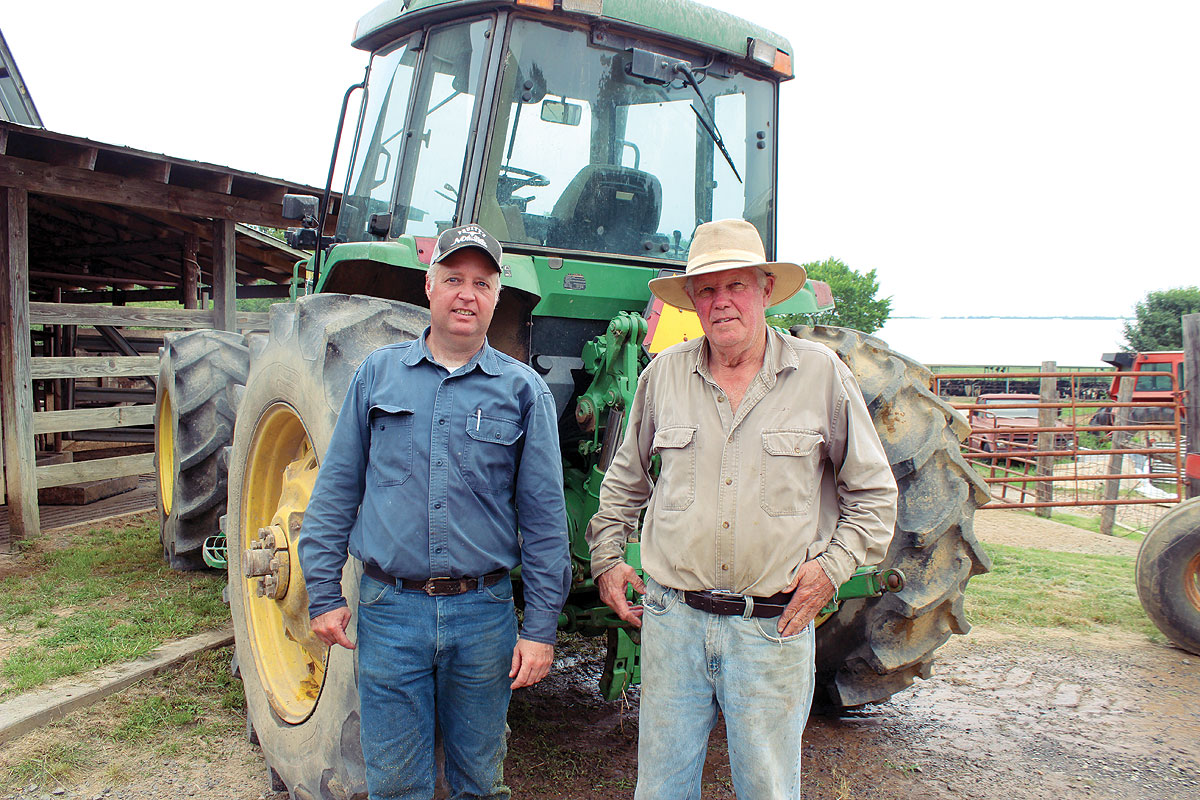
Marcus Flippin of Flippin, Ark., is a fifth-generation waterman.
“Technology and needs have changed so drilling new wells is almost nonexistent. A year ago I downsized and formed Flippin Pump Service for commercial, residential and agricultural customers,” Marcus said.
Marcus and Gail Flippin met on a blind date in Branson, Mo. They now live on 120 acres on the outskirts of Flippin.
“The town was named after us. Before that we emigrated from Flippin, Tenn., and even before that from Flippin, Ky.,” Marcus explained. “I was told all the towns were penal colonies first. Maybe our family is antisocial!”
The original Flippin land in the early 1800s was used to raise tobacco, cotton and corn though that land is now part of the town.
While Marcus’ father Harold, or “Jug” as he was called, was solely a waterman. His uncle James raised cattle and horses, in addition to being in the water business. The draw for the young boy was obvious: horses to ride and cattle to work. Marcus remembers coming home from church in his Sunday best and going out riding with his uncle when he was only 3 years old. Pictures of he and his uncle riding in church clothes are among his favorites.
Because his wife Gail and one of his daughters loved Paint horses, his horse business started with Paints, but Marcus found the experience troublesome.
“It seems that for every white hair, I found one less brain cell,” he said with a rueful smile.
The couple then transitioned to cattle. When Marcus was 16, he purchased 20 Limousin heifers in partnership with his uncle. Through the years, they worked with a number of breeds including Chianini and Shorthorns, especially while his children were showing cattle in fairs.
“The Chianini were a good crossing breed because they were a three purpose breed (milk, meat and work), that passed on size and disposition but not color,” Mark said.
Marcus studied and performed AI with the cleanup bull for breeding.
When the children grew up, Marcus and Gail gave up the additional 340 acres they had leased for their cattle and returned to the original 120 acres. This time they switched to registered, high-quality cutting Quarter horses by buying, breeding, training and selling them.
The current herd contains five mares and two fillies. Marcus is part of an informal horse breeding cooperative, with retired Police Chief Frank DePriest being the person he works with most often. Marcus does most of the breeding while Frank handles training, sharing facilities as needed.
Because breeding horses is much more physical and therefore potentially damaging than breeding cattle, Marcus prefers and performs AI for horse breeding too. According to Marcus, even though the technique is the same, the differences that exist between using AI with horses and cattle are basically a result of the structural differences in the two kinds of animals because the reproductive systems in horses is much deeper.
Determining readiness in cattle is easier through the use of a heat patch or observation of herd behavior. In horses, readiness is determined through the use of an ultrasound to see the size of the egg follicle. Insertion is also more difficult with horses because the system is so much deeper. On the other hand, the first attempt success rate of 85 percent is higher than a typical 65 percent rate for cattle. Another result of the deeper reproductive system is a need for much more semen, 15 to 20 cc for horse AI as opposed to 1/2 cc of frozen semen with cattle.
Semen collection is also different. Stallions need to mount dummies four to five times before, “the pipes are cleared.” Because of its location within the body, horse semen is also warmer and more sensitive to temperature. This means freezing is less viable, with some semen not tolerating freezing. In keeping with his desire for the highest-quality bloodlines, Marcus prefers the bloodlines of Smart Little Lena, who was the number one elite money earner for Quarter horses in his mares and Pepto Boonsmall for breeding with a grandson of Pepto Boonsmall providing semen for collection when needed.
Broodmares are kept in pastures with supplemental salt and minerals. Ninety days before foaling, they are placed in stalls with the grain rations selected for each mare according to individual body structure and needs. Foals are also kept in stalls. These horses get all the alfalfa they want, with Marcus buying his alfalfa in Iowa because it is raised for horse consumption. According to Marcus, one dead blister beetle equals one dead horse and locally grown alfalfa, what little there is, is intended for cattle. Foals receive their first round of tetanus, rabies and rhino vaccines at 6 months of age, with every horse vaccinated annually.
The official birthday of all registered horses is Jan. 1, but Mark prefers foals to be born in March or April because the mares seem to do better foaling after winter and early spring bad weather has passed.
“If you control diet and activity which includes regular exercise, these colts will grow well and catch up with those born earlier,” Marcus explained.
“My biggest challenge is time. With 3,000 to 4,000 pumps to be maintained, I often have no time to ride,” he said. “However I don’t have to ride to get the benefits of being in the horse business. Horses are simply beautiful animals and a pleasure to be around.”
Marcus is also very active in the community with 4-H and FFA occupying a special place in his life. He helped start the Flippin FFA Boosters and helped organize the local fair’s premium sale process. Now Flippin FFA Boosters offer a self-supporting scholarship based on need, rather than GPA.







